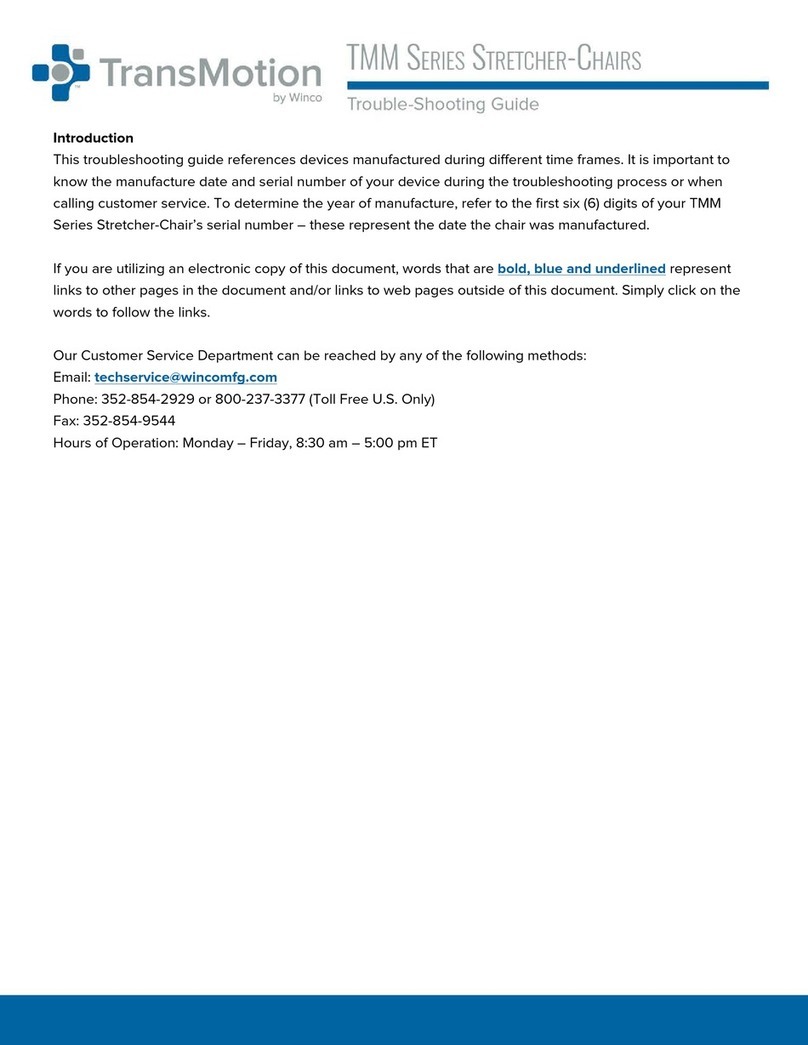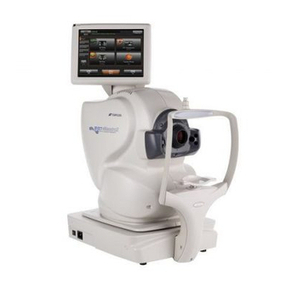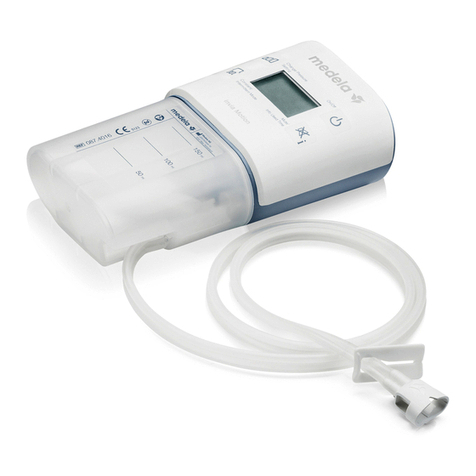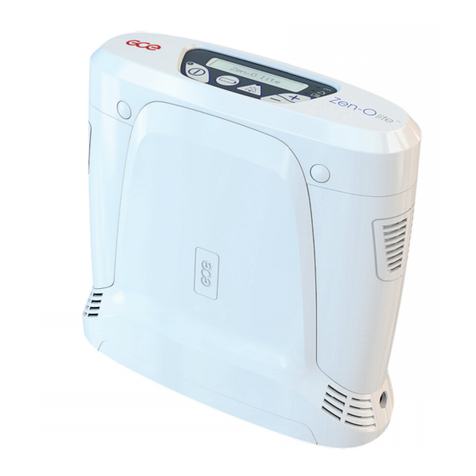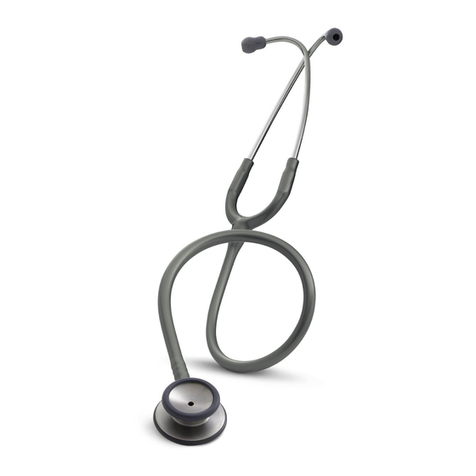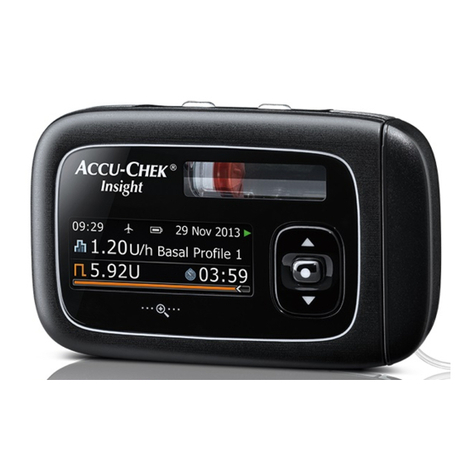Transmotion TMM3 User manual

OPERATION MANUAL
Model TMM3 Series
Video Fluoroscopy Chair
Options:
S Short Base
F Folding Footrest
E Export
B Battery
A ACPower
1441 Wolf Creek Trail - PO Box 302, Sharon Center, OH 44274
Phone: 1-866-860-8447 - Fax: 1-330-239-4465
www.transmotionmedical.com
Document No.: OM TMM3 SERIES
Revision: R
Page 1 of 25

TABLE OF CONTENTS
IMPORTANT NOTES ABOUT THIS MANUAL.............................................................................3
SPECIAL NOTES - SIGNAL WORDS..........................................................................................3
SAFETY PRECAUTIONS.............................................................................................................4
LABELING DIAGRAMS (TMM3-B shown)..................................................................................8
OPERATING INSTRUCTIONS...................................................................................................10
BACK SECTION QUICK RELEASE.......................................................................................................................10
CASTER BRAKE OPERATION .............................................................................................................................11
SIDE RAIL OPERATION........................................................................................................................................12
ADJUSTING SIDE RAIL ANGLE ...........................................................................................................................12
PENDANT (CONTROLLER) ..................................................................................................................................15
PATIENT INGRESS / EGRESS.............................................................................................................................16
PATIENT TRANSFER............................................................................................................................................17
PUSH BAR OPERATION.......................................................................................................................................17
SEAT ROTATION...................................................................................................................................................18
OPTIONS ...................................................................................................................................19
“S” OPTION: SHORT BASE..................................................................................................................................19
“F” OPTION: FOLDING FOOTREST ....................................................................................................................19
“E” OPTION: EXPORT ..........................................................................................................................................19
“B” OPTION: BATTERY PACK..............................................................................................................................20
“A” OPTION: AC POWER (for on-board batteries and charger)...........................................................................21
SWITCH SCHEMATIC ...............................................................................................................22
CLEANING INSTRUCTIONS .....................................................................................................23
PAD REMOVAL INSTRUCTIONS .........................................................................................................................23
PREVENTIVE MAINTENANCE..................................................................................................24
SERVICE INFORMATION..........................................................................................................25
Document No.: OM TMM3 SERIES
Revision: R
Page 2 of 25

IMPORTANT NOTES ABOUT THIS MANUAL
This Operations Manual is designed to assist you with operating your TransMotion Medical Product. Carefully read
this manual before using the equipment or doing service / maintenance on it. If you are unable to understand the
WARNINGS and CAUTIONS and instructions, contact TransMotion Medical customer service before attempting to
operate or service the equipment. Otherwise, injury or damage may result.
To assure safe operation of this device, it is essential that methods and procedures be established for educating
and training staff on the safe and effective operation of this product.
TransMotion Medical Inc. reserves the right to change specifications without notice.
The information contained in this document is subject to change without notice.
Specifications listed are nominal, and operation may vary slightly from unit to unit due to tolerance variations or
power supply variations.
Photographs and illustrations contained within this document may not depict exactly the model you have. This
document is intended to cover many closely related models.
SPECIAL NOTES - SIGNAL WORDS
Signal words are used in this manual and apply to hazards which could result in injury or property damage. The
following is a definition of those signal words as used in this manual:
Indicates an imminently hazardous situation which, if not avoided, will result in death or serious injury.
Indicates a potentially hazardous situation which, if not avoided, could result in death or serious injury.
Indicates a potentially hazardous situation which, if not avoided, may result in minor or moderate injury. It may also
be used to alert against unsafe practices or potential property damage hazards.
NOTICE
Provides important information, makes special instructions clearer, or provides service personnel information to
make maintenance easier.
Document No.: OM TMM3 SERIES
Revision: R
Page 3 of 25

SAFETY PRECAUTIONS
WARNINGS:
CHAIR OPERATION BY QUALIFIED, TRAINED MEDICAL PERSONNEL ONLY
xThe chair is intended to be operated only by qualified, trained medical staff. Operation of chair by
unauthorized / untrained / lay people must be avoided.
USE CAUTION ON RAMPS
xControl chair when traversing ramps. If a collision occurs, serious injury to patient, bystanders, or medical
personnel could result, as well as, damage to chair or medical facility could occur.
LOCK CASTERS BEFORE PATIENT EGRESS / INGRESS
xPrior to patient egress / ingress, casters must be locked by depressing red tab completely down on either
left- or right-side brake pedal.
AVOID PINCH POINTS AND OTHER INJURIES
xTo prevent serious injury, ensure extremities of patient and bystanders are clear of all mechanical systems
when operating motors for lift and positioning functions.
xTo prevent pinch / crush injury, ensure extremities of patient and bystanders are clear of locking
mechanism when raising and lowering side rails.
xTo prevent patient strangulation, use approved hand pendant storage location when not in use (see
PENDANT section).
BATTERY CAN EXPLODE DUE TO OFF-GASSING WHEN CHARGING
xAt end of charging process (or with overcharge conditions), battery can produce mixture of explosive gases
(including hydrogen and oxygen). Avoid exposing battery to open flames, cigarettes, sparks, and
incandescent materials.
xNever charge battery in enclosed, unventilated spaces.
xDo NOT store battery in sealed container. Store in fresh, well-ventilated area protected from direct sunlight
and heat sources.
xDo NOT use water to extinguish battery fire. Use dry powder, foam CO2extinguisher.
USE CAUTION WHEN STORING OXYGEN CYLINDER UNDER CHAIR
xTo prevent severe gas leakage / rupture of compressed gas cylinder, when placing cylinder under chair,
ensure adequate clearance between cylinder and its attached gas equipment (i.e. regulator, gauges,
fittings, knobs) and all adjustable chair sections / features (i.e. seat, back, leg, rails, actuators).
xTo prevent fire / explosive hazard, do not leave chair (and stowed oxygen equipment) near heat source.
xTo prevent gas equipment damage during transport, ensure cylinder sets in cradle properly and strap
mechanisms are secured tightly. Chair is intended to accommodate up to an E-size cylinder (4-3/8” outer
diameter x 25” length).
DO NOT PLACE EXCESSIVE WEIGHT ON ENDS
xPosition patient’s body weight uniformly over the patient surface. Use caution when shifting patient’s body
weight towards either end of the stretcher-chair. Excessive weight on either end of the device could cause
the stretcher-chair to become unstable.
xDo not sit or stand on the ends of the stretcher-chair. Instruct patients to not stand on footrest during
egress / ingress.
xDue to the unique nature of each patient’s body shape, caregiver should exercise sound judgment when
positioning patient on the device.
Document No.: OM TMM3 SERIES
Revision: R
Page 4 of 25

ACCESSORY WARNINGS:
xTo prevent serious injury and property damage, review operating manuals of all medical equipment and
accessories that may be used with, or attached to, this chair.
xUsing the supplied accessories in the incorrect manner may cause patient, bystander, or facility harm.
xIf chair is equipped with accessory belts, refer to appropriate Field Installation and Usage Instructions
(provided with belts) for proper installation, use, and care.
xTo prevent fire hazards, follow all precautions and operating procedures prescribed by suppliers of oxygen
administering equipment (i.e. oxygen gas regulators, tents, masks, cannulas, etc.)
xTo prevent injury and property damage, total weight of items placed on “IV” pole must be less than 25 lbs.
xIf mounting accessories to back surgical rails, ensure accessory is properly installed and securely engaged
prior to transporting patient/chair, and prior to use. Only equipment approved by TransMotion Medical is to
be mounted on surgical rails. TransMotion Medical is not responsible for damage, and assumes no liability,
caused by the use of unapproved equipment or accessories. Approved medical equipment includes tools,
instruments, or scopes that are compatible with a.365” thick by 1.125” wide surgical rail.
CAUTIONS:
DO NOT MODIFY CHAIR
xModifying chair can cause unpredictable operation resulting in injury to patient, medical personnel, or
bystander. Modifying chair will void warranty.
USE SAFE OPERATING PROCEDURES
xPrior to operating chair, ensure patient clearance by moving any overhanging equipment, or moving chair
from under a table, to prevent patient injury.
xFor TMM3, chair must be at least 20 inches from nearest wall or obstruction to allow for full range of
activation.
xLeave chair in lowest position whenever possible. This practice will decrease potential injury during an
unsupervised patient egress from chair.
xPrior to patient transport in chair, raise side rails and ensure latching mechanism is in locked position.
Medical personnel must determine degree of restraint needed to ensure patient’s safety during transport.
xTo prevent personal injury to medical personnel and/or patient, ensure the back extension is properly
installed and securely engaged prior to transporting patient/chair, and prior to use of IV system.
xFor “F” Option Only
Since footrest is foldable (not locked in position), ensure protection of patient’s feet while moving chair in
close quarters (i.e. elevators, crowded hallways, procedure rooms).
INSPECT AND CLEAN CHAIR REGULARLY
xInspect cushions after each use. Discontinue use if upholstery is ripped, cut, or torn, which could allow
fluids to enter cushion. This practice will prevent infection of patients and medical personnel and
contamination of medical equipment.
xDo NOT use machine / pressure / power wash procedures on chair. After each use in a clinical setting,
hand wash all patient-contact surfaces (i.e. cushions, rails) and plastic base cover with warm water and
mild detergent.
xFor “A” Option Only
For large fluid spills on chair, immediately unplug chair from AC wall outlet.
Document No.: OM TMM3 SERIES
Revision: R
Page 5 of 25

PLUG CHAIR INTO PROPERLY GROUNDED WALL OUTLET MARKED
“HOSPITAL ONLY” OR “HOSPITAL GRADE”
xFor “A” Option Only
Chair is equipped with hospital-grade three-prong plug for protection against electric shock, and must be
plugged into properly grounded hospital-grade wall outlet.
MAX WEIGHT OF BACK SURGICAL BAR
xThe max weight capacity of each back surgical bar is 50 pounds. To prevent personal injury to patient, do
not mount equipment weighing more than 50 pounds to device. Weight of patient plus weight of equipment
should not exceed 350 pound weight capacity of TransMotion Medical stretcher-chair.
EMI CAUTION:
EMI MAY AFFECT CHAIR FUNCTIONALITY
Chair may be susceptible to EMI (ElectroMagnetic Interference) caused by electromagnetic energy emitted from
various sources, such as, radio and television stations, amateur radio (HAM) transmitters, citizen band (CB) radios,
hand-held “walkie-talkies”, security / police / fire transceivers, and other communication devices. EMI can cause
chair to move by itself, or in an unintended fashion. It can damage control system(s).
Intensity of interfering energy is measured in V/m (volts per meter). Chair can resist EMI up to a certain intensity,
called its “immunity level”. When the immunity level is higher, the less likely EMI will interfere with chair operation.
The chair has been tested to 20 V/m immunity level, which is sufficient to provide useful protection from common
sources of radiated electromagnetic energy.
In clinical environments devices can emit electromagnetic energy, which becomes more intense as one moves
closer to energy source. To reduce chance of unintended movement or operation of chair, observe the following:
1. Be aware of nearby high-power transmitters (radio and TV stations), MRI (magnetic resonance imaging)
systems, and NMR (nuclear magnetic resonance) imaging systems. Keep chair away from these areas.
2. Do not operate hand-held transmitters near chair.
3. Do not operate chair near others using hand-held transmitters.
4. If unintended chair movement occurs, disconnect battery, and move chair away from location.
Document No.: OM TMM3 SERIES
Revision: R
Page 6 of 25

NOTICES:
MAXIMUM PATIENT WEIGHT IS 350 lbs (158 kg)
xMaximum patient weight capacity of chair is 350 pounds. If exceeded, damage to chair could occur.
CHAIR IS INTENDED FOR INDOOR USE ONLY
xTo ensure proper operation and extend chair life, only use chair in specified environment.
USE CDC’s UNIVERSAL PRECAUTIONS
xWhen maintaining chair after clinical use, service personnel must use UNIVERSAL PRECAUTIONS as
defined by CDC (Centers for Disease Control and Prevention).
MAINTAIN CHAIR REGULARLY
xTo ensure proper operation and extend chair life, inspect, maintain, and service chair on a regular basis.
Inspection, maintenance, and service details are located later in this manual.
REMOVE BATTERY DURING CHAIR STORAGE
xFor “B” Option Only
If chair is to be stored or not in use for more than 3 weeks, remove battery pack from chair. Refer to
Battery Charger Installation and Usage Instructions (IM TMA57-15), under the “Cautionary Usage
Instructions” section, for more information.
xFor “A” Option Only
If chair is to be stored or not in use for more than 1.5 weeks, leave chair plugged into an AC wall outlet or
unplug battery from control box. For more information, refer to “A” Option section below.
Document No.: OM TMM3 SERIES
Revision: R
Page 7 of 25

LABELING DIAGRAMS (TMM3-B shown)
INSPECT LABELS PERIODICALLY
Every three months, inspect all labels and ensure that they are legible, and not tattered, torn, or missing.
Refer to label locations in figures below. If labels need to be replaced, contact TransMotion Medical Customer
Service at 1-866-860-8447.
Document No.: OM TMM3 SERIES
Revision: R
Page 8 of 25

Document No.: OM TMM3 SERIES
Revision: R
Page 9 of 25

OPERATING INSTRUCTIONS
BACK SECTION QUICK RELEASE
LOCATE RELEASE LEVER
Back section quick release (red) lever is located under seat on
patient’s right side.
ACTIVATE RELEASE LEVER
To activate back section quick release, pull red lever out
towards the arm rail. When weight is applied, back section will
drop until lever is released.
Quick release feature is intended for emergency purposes only.
PRIOR TO PERFORMING CHEST COMPRESSIONS ON A
PATIENT, FIRST AND FOREMOST, THE PATIENT SHOULD
BE MOVED TO A MORE STABLE, NON-PADDED
PLATFORM. SECONDARILY, IF ATTEMPTING TO
PERFORM CHEST COMPRESSIONS ON THE TMM DEVICE,
THE PATIENT SHOULD BE PLACED ON A BACK BOARD,
OR POSITIONED ON THE CHAIR SO THE PATIENT’S
CHEST CAVITY IS OVER, OR AS CLOSE TO, THE COLUMN
SUPPORT AS POSSIBLE. IT IS THE RESPONSIBILITY OF
THE MEDICAL PROFESSIONAL TO DETERMINE WHETHER
CPR CAN BE EFFECTIVELY PERFORMED ON THIS CHAIR
ON A CASE-BY-CASE BASIS.
DO NOT TWIST OR ADJUST THE DAMPER.
DOING SO COULD RESULT IN THE BACK RELEASE
LEVER FUNCTIONING IMPROPERLY DURING AN
EMERGENCY.
To ensure proper operation, activate quick release every thirty days. If quick release does not operate
properly, please contact TransMotion Medical Customer Service at 1-866-860-8447.
Document No.: OM TMM3 SERIES
Revision: R
Page 10 of 25

CASTER BRAKE OPERATION
BRAKE MODE
Activate braking system by pressing down on red end of either
brake pedal located at base of chair.
This mode prevents all four casters from swiveling and all
wheels from spinning.
NEUTRAL MODE
Activate neutral mode by placing either brake pedal into a
horizontal orientation.
This mode allows all four casters to swivel and all wheels to
spin freely.
STEER MODE
Activate steer-locking system by pressing down on green end
of either brake pedal located at base of chair.
This mode locks caster (near patient’s right foot) parallel to
base, but allows this wheel to spin. Other three casters swivel,
and wheels spin freely.
Document No.: OM TMM3 SERIES
Revision: R
Page 11 of 25

SIDE RAIL OPERATION
LOWERING SIDE RAIL
Grasp top of side rail and push inward slightly, while
pulling out red rail release tab. Once released, lower rail.
STOWING SIDE RAIL
To stow side rail, lower rail into “down” position below
seat (or back section depending on rail location). Push
side rail until it fully engages retainer clip.
RAISING SIDE RAIL
Lift side rail until it is in “up” position.
xRed rail release tab will engage (lock) automatically.
xEnsure side rail is secure by pulling on rail after it is
raised.
ADJUSTING SIDE RAIL ANGLE
Remove cushion and seat pan by removing four pan
head screws.
NOTICE
Do not discard seat pan, pan head screws, or additional
hardware removed during this step. Parts will be reused
after adjustment.
Loosen top jam nut.
Document No.: OM TMM3 SERIES
Revision: R
Page 12 of 25

To move inward, rotate bottom jam nut as shown.
To move outward, rotate bottom jam nut as shown.
Document No.: OM TMM3 SERIES
Revision: R
Page 13 of 25

Once aligned, tighten top jam nut.
NOTICE
1) You do not need to hold bottom nut to tighten
top. Once aligned, top nut is tightening nut.
2) When adjusting, ensure bottom jam nut is
contacting seat frame.
3) Ball joint head angle does not matter.
4) Prior to adjustment, pull outward on side rail in
order for system to settle.
5) Ensure top jam nut engages at least two full
threads.
Do not over tighten top jam nut (there is no need).
Reattach seat pan and cushion.
Document No.: OM TMM3 SERIES
Revision: R
Page 14 of 25

PENDANT (CONTROLLER)
PENDANT IS NOT INTENDED FOR PATIENT’S USE
To prevent damage, pendant can be stored at various locations
on the chair when not in use.
ENSURE AREA IS CLEAR OF OBSTRUCTIONS PRIOR TO
PENDANT USE
To prevent property damage or injury to patient, survey area for
possible obstructions prior to pendant use.
BACK SECTION ADJUSTMENT
First row of pendant buttons controls angle of back section.
xPress left button to raise chair’s back.
xPress right button to lower chair’s back.
LEG SECTION ADJUSTMENT
Second row of pendant buttons controls angle of leg section.
xPress left button to raise chair’s leg section.
xPress right button to lower chair’s leg section.
SEAT HEIGHT ADJUSTMENT
Third row of pendant buttons controls height of seat section.
xPress left button to raise chair’s seat.
xPress right button to lower chair’s seat.
SIMULTANEOUS LEG AND BACK SECTION
(AUTO CONTOUR) OPERATION
Fourth row of pendant buttons controls simultaneous actuation
of leg and back sections.
xPress left button to raise chair’s leg section and lower
chair’s back, resulting in stretcher configuration.
xPress right button to lower chair’s leg section and raise
chair’s back, resulting in chair configuration.
Document No.: OM TMM3 SERIES
Revision: R
Page 15 of 25

PATIENT INGRESS / EGRESS
PATIENT SHOULD NEVER BE PERMITTED TO ENTER / EXIT FROM ENDS OF STRETCHER-
CHAIR WHEN IN AN UPRIGHT, PARTIALLY, OR TOTALLY RECLINED POSITION. EXCESSIVE WEIGHT ON
ENDS COULD CAUSE CHAIR TO TILT, RESULTING IN POSSIBLE PATIENT INJURY.
xFollow these instructions for safe and proper patient ingress (entry onto chair) and egress (exit from chair).
xPatient ingress / egress should always be made with chair in upright-chair position.
xPatient must enter / exit from side of chair with their body weight centered over SEAT section.
xSee PATIENT TRANSFER section for instruction on transferring patient from one horizontal surface to another.
PATIENT INGRESS (ENTRY)
1. Depress RED caster brake pedal to lock caster wheels.
2. Adjust chair to lowest height and into upright-chair position.
3. Lower one side rail of seat section.
4. If back section rails are present, remove / lower back section rail of same side.
5. Position patient (facing away from chair) at SEAT section.
6. WITH PATIENT ENTERING FROM SIDE OF CHAIR, assist patient while they sit down on SEAT section.
7. Once patient is fully seated, assist them in rotating their body in-line with chair into a seated position.
PATIENT EGRESS (EXIT)
1. Depress RED caster brake pedal to lock caster wheels.
2. Adjust chair to lowest height and into upright-chair position.
3. Lower one side rail of seat section.
4. If back section rails are present, remove / lower back section rail of same side.
5. Ensure patient’s body weight is centered on SEAT section.
6. WITH PATIENT EXITING TO SIDE OF CHAIR, assist patient in rotating their body by placing their legs over
one side of chair.
7. Assist patient into standing position from seated position.
Document No.: OM TMM3 SERIES
Revision: R
Page 16 of 25

PATIENT TRANSFER
PATIENT’S BODY WEIGHT SHOULD NEVER BE SHIFTED TOWARDS EITHER END OF CHAIR
WHEN IN A PARTIALLY, OR TOTALLY, RECLINED POSITION. SERIOUS PATIENT INJURY MAY OCCUR.
ALL PATIENT TRANSFERS MUST BE MADE TO RIGHT SIDE OF TMM3-SERIES CHAIR, DUE TO SHAPE OF
BACK SECTION, AND NOT TO CHAIR ENDS.
Follow these instructions for safe and proper patient transfer between chair (in stretcher orientation) and
another horizontal surface.
1. Position back, seat, and leg sections into horizontal orientation. (Press Auto Contour button.)
2. Lower / remove all side rails from transfer (right) side of chair.
3. Position chair as close as possible to other surface.
4. Match chair (stretcher) height to height of bed or other horizontal surface.
5. Depress RED caster brake pedal to lock caster wheels.
6. Slide patient from one surface to other, following your facility’s standard practices / policies for lateral
patient transfers.
PUSH BAR OPERATION
LOWERING PUSH BAR
Grasp push bar handle while pulling out red release knob.
Lower push bar into “down” position.
RAISING PUSH BAR
Lift push bar handle until it is in “up” position.
Red release knob will engage (lock) automatically.
Document No.: OM TMM3 SERIES
Revision: R
Page 17 of 25

SEAT ROTATION
xTO PREVENT TIPPING AND PATIENT INJURY, ONCE SEAT IS ROTATED, DO NOT RECLINE BACK
SECTION OR POSITION CHAIR IN HORIZONTAL ORIENTATION.
xWITH SEAT IN ROTATED POSITION, DO NOT TRANSPORT PATIENT OR ATTEMPT PATIENT
TRANSFER TO / FROM ANOTHER SURFACE.
While chair is in rotated position:
xChair cannot be lowered.
xBack and leg sections may be adjusted SLIGHTLY for patient comfort or for imaging procedure.
During chair adjustment, ensure no damage to chair or imaging device.
1. With patient in chair, depress RED caster brake pedal to lock caster wheels.
2. Place in chair configuration by pressing Auto Contour button on pendant.
3. Raise seat to highest height using pendant.
4. Pull out black seat lock knob located under back of
seat section.
5. Rotate chair 90° counterclockwise (or 1/4-turn to
operator’s right) until lock knob reengages.
Document No.: OM TMM3 SERIES
Revision: R
Page 18 of 25

OPTIONS
“S” OPTION: SHORT BASE
For “S” option, wheel base length is 26”.
Standard wheel base length is 30”.
“F” OPTION: FOLDING FOOTREST
WHEN POSITIONING FOOTREST,
BE AWARE OF PINCH POINTS
To stow footrest, place both hands on
red handles and lift.
For patient comfort, stow footrest prior
to articulating chair into supine
(stretcher) position. EXTENDED FOOTREST STOWED FOOTREST
“E” OPTION: EXPORT
“E” option designates chair was shipped
with power cord specific to receiving
country.
“A” option power cord is directly attached
to chair.
“B” option power cord is attached to
battery charger (# TMA57-15).
Power cords depicted in image may not
match power cord shipped with your
chair.
Document No.: OM TMM3 SERIES
Revision: R
Page 19 of 25

“B” OPTION: BATTERY PACK
REMOVING BATTERY PACK FROM CHAIR
Grasp integrated handle on battery pack and pull away from
chair until cam locks disengage. Remove battery from
mounting bracket.
INSTALLING BATTERY PACK ONTO CHAIR
Place two round, cam locks on back of battery into square
openings of mounting bracket. Once in place, slide battery
down (inward toward column) until cam locks engage.
ADDITIONAL BATTERY INFORMATION
All chairs come with additional battery and wall-mountable
battery charger. Additional battery may be stored in wall
charger or on mobile battery stand.
For more information related to the battery and charger, see
Battery Charger Installation and Usage Instructions (IM TMA57-
15).
Document No.: OM TMM3 SERIES
Revision: R
Page 20 of 25
Table of contents
Other Transmotion Medical Equipment manuals
Popular Medical Equipment manuals by other brands

Getinge
Getinge Arjohuntleigh Akron Bobath 4 Instructions for use
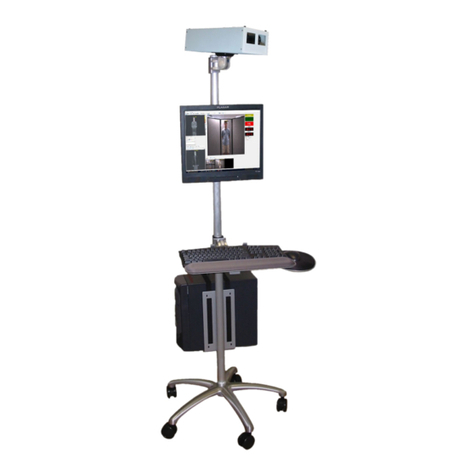
OPTOTHERM
OPTOTHERM Thermoscreen IS640 user manual

Seers Medical
Seers Medical Medicare Bariatric SM3484 operating instructions
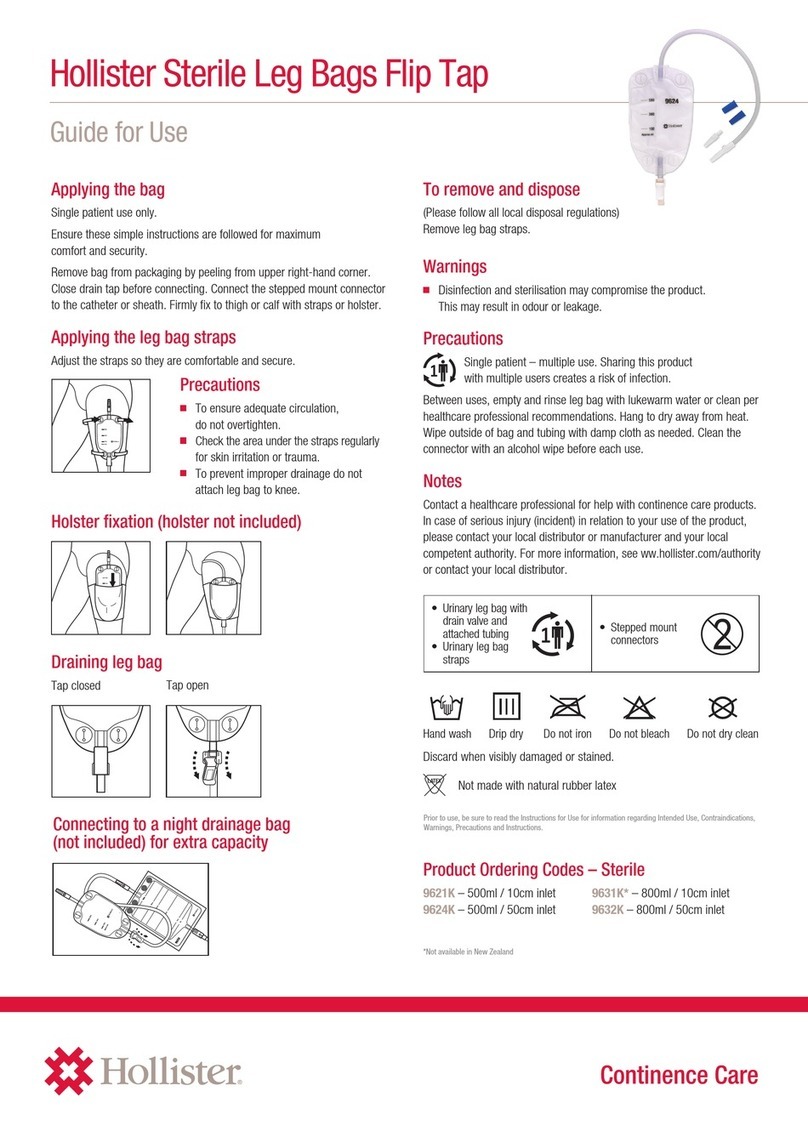
Hollister
Hollister 9652 Guide for Use
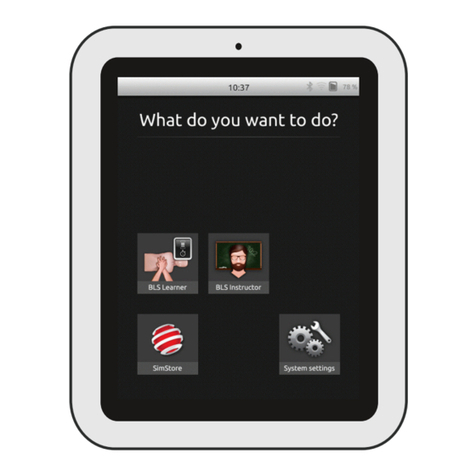
laerdal
laerdal SimPad Directions for use
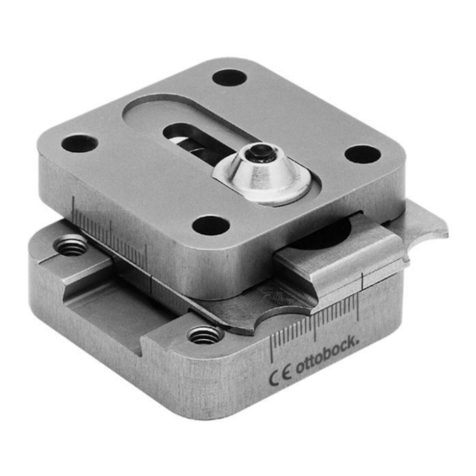
Otto Bock
Otto Bock 4R101 Instructions for use
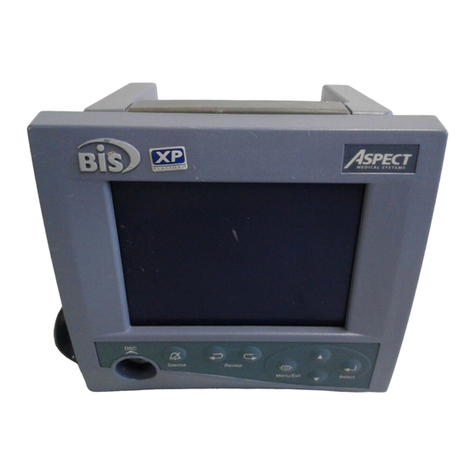
Aspect Medical Systems
Aspect Medical Systems BISPECTRAL INDEX A-2000 Service manual
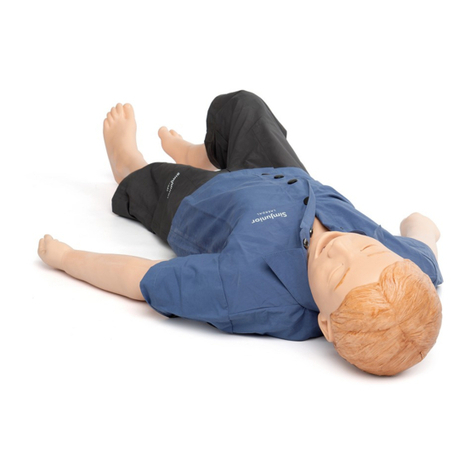
laerdal
laerdal SimJunior Directions for use

OT Bioelettronica
OT Bioelettronica Quattro user manual
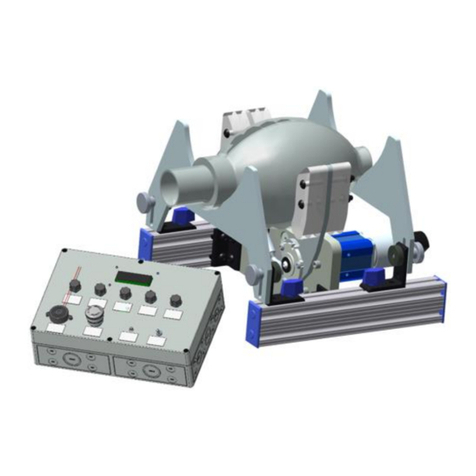
Walbro
Walbro Mini-Ventilation Machine manual

AJEX
AJEX 240H operating instructions
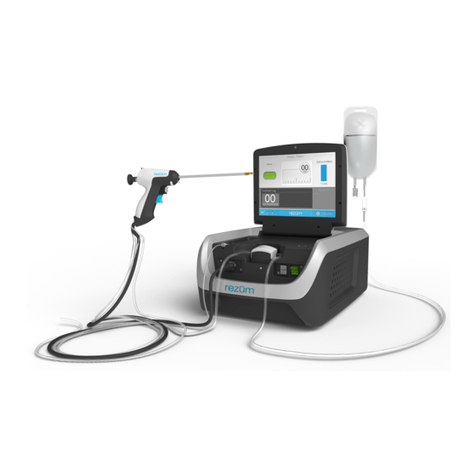
Boston Scientific
Boston Scientific rezum Directions for use
